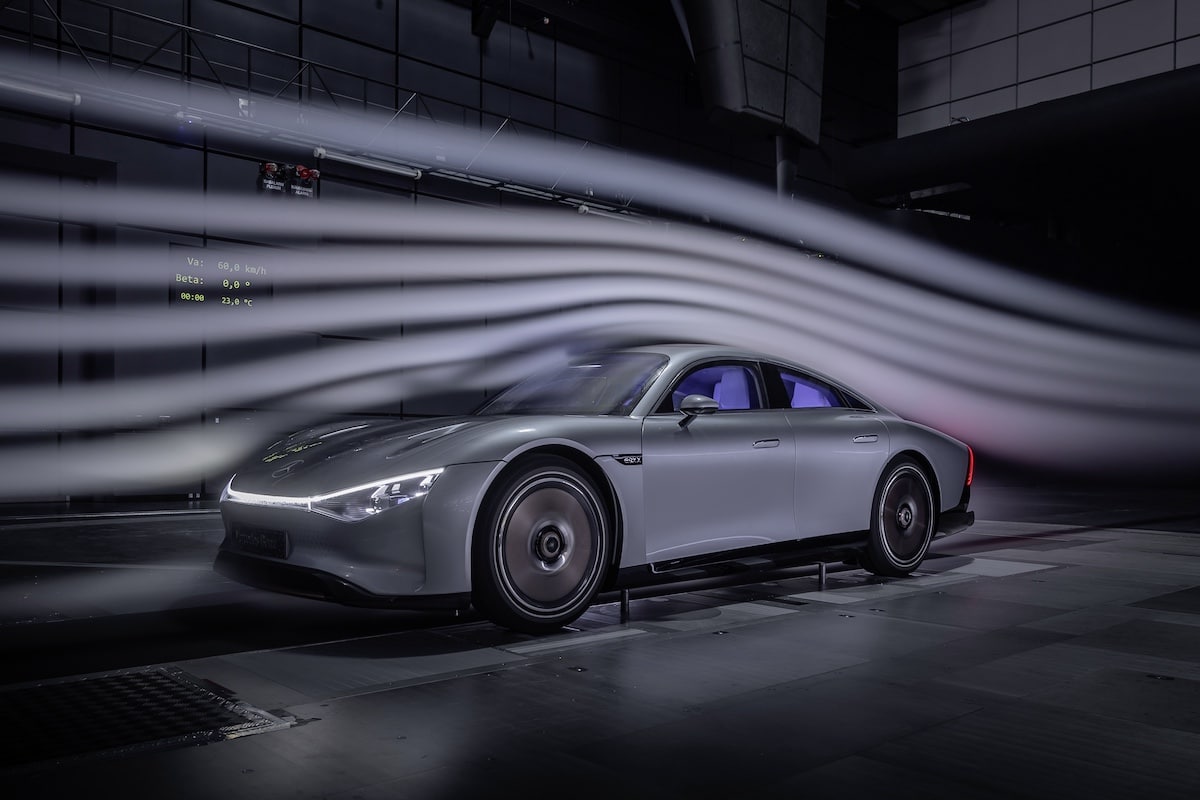Aerodynamics and Consumption: The Challenge of Modern Automobiles

Air resistance remains the primary energy expense of a car, especially at high speeds.
In physics, whether for automobiles or not, everything comes down to figures, calculations, and equations. Drag force is proportional to the square of the speed and the frontal surface area. The air resistance increases exponentially with speed. This requires manufacturers to control every airflow around the bodywork. Even small local optimizations can lead to significant gains. A reduction of 0.01 in the drag coefficient (Cx), which directly depends on the drag force, results in approximately 2 to 3% more range for an electric vehicle.
Mercedes-Benz illustrates the importance of these optimizations. On models like the electric CLA (Cx 0.21) or the EQS (Cx 0.20), each component contributes to reducing drag. The underbody is fully covered with aerodynamic panels, with suspension arms and linkages enclosed to limit turbulence. The wheels are profiled and sometimes coated with low-adhesion paint to reduce resistance by up to 0.015 Cx per wheel. Wheel spoilers, located in front and behind the axles, guide the air and prevent vortex formation. The grille is active, adjusting airflow based on engine temperature, and rear diffusers, depending on whether a trailer hitch is present, optimize airflow trailing. Even door seals and window contours are carefully studied to decrease aerodynamic disturbances and aeroacoustic noise.
The car must play the air girls
In the automotive industry, this logic is widespread. Design offices use CFD (Computational Fluid Dynamics) to simulate thousands of bodywork configurations and peripheral components, complemented by climate wind tunnels and aeroacoustic testing. Wheels, tires, and side skirts are evaluated not only for their impact on drag but also for noise and interior comfort. Active grilles, shutters, and spoilers allow real-time airflow adjustments depending on the vehicle’s speed or load.
You might be interestedin this article:
In the end, every component contributes to airflow penetration. The body, underbody, wheels, diffusers, and even the glass help reduce drag, enhance efficiency, and extend range. Mercedes-Benz offers an advanced example, but the lesson is clear for the entire industry: mastering aerodynamics is no longer optional but a technical necessity—a must to decrease consumption, cut emissions, and ensure comfort and safety.
READ ALSO: Tesla Model Y now achieves 800 km range thanks to Panasonic!
This page is translated from the original post "Aérodynamique et consommation : le défi de l’automobile moderne" in French.
We also suggestthese articles:
Also read






